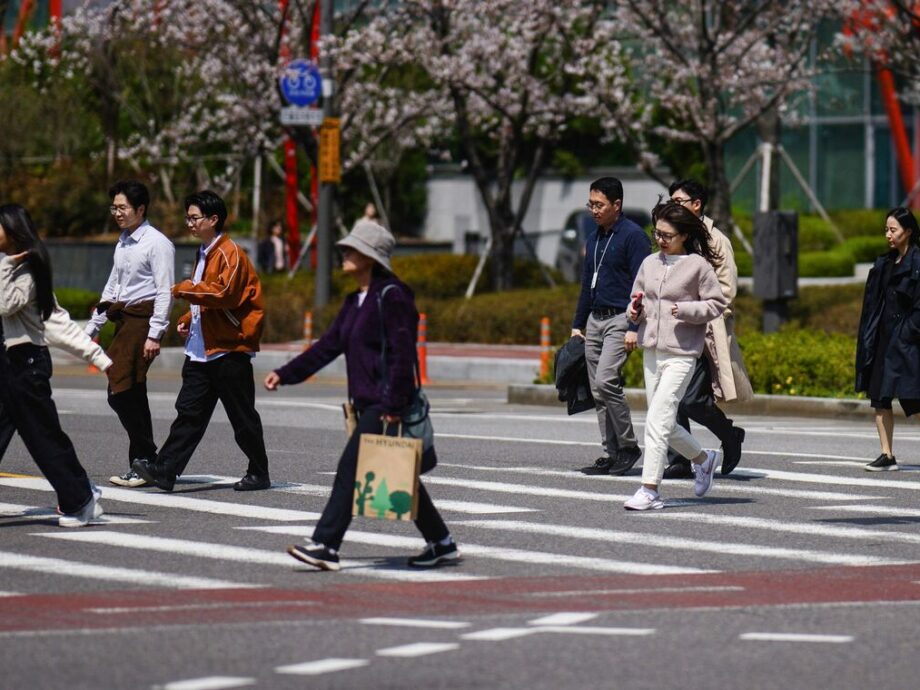Seoul enters a new era of solo living
One person households are now the most common way of living in Seoul. City data for 2024 counts about 1.66 million solo households, nearly 40 percent of all homes in the capital. Two person households account for 26.2 percent, while four person households stand at 12.3 percent. The shift is part of a wider remodeling of family life in South Korea, with smaller homes, later marriages, and an aging population changing how people live, work, and plan for the future.
- Seoul enters a new era of solo living
- Why are more people living alone in the capital?
- A city that is growing older
- Marriage rebounds after the pandemic
- Fewer homes with young children
- Life on a single income
- Risk and resilience, where isolation clusters
- How Seoul is responding
- Environment and the footprint of solo living
- Key Points
The national picture points in the same direction. Government registration data shows almost 10 million people living alone in 2023 and more than 10 million in 2024, with the share of solo households rising faster than the total number of households. Statistics Korea, which measures families rather than addresses, reported that 34.5 percent of households were one person in 2022. The different approaches produce different numbers, yet both show rapid growth in solo living concentrated in and around Seoul.
Seoul is also crossing a demographic threshold. The city says it now qualifies as a superaged society, which is the widely used definition when people aged 65 or older surpass 20 percent of the population. More than three in ten households include at least one person aged 65 or older. The overlap of an older population and a fast rise in solo living is reshaping demand for housing, care, public health, and neighborhood services throughout the city.
Why are more people living alone in the capital?
Several forces are pushing household sizes down. First marriages are happening later than before, and while weddings fell during the Covid pandemic, they have started to rebound. Many people pursue higher education, move across districts for work, and prefer independent lives through their 20s and 30s. At the same time, some married couples live apart during the work week because jobs are in different cities, and some long term relationships do not involve marriage at all.
High housing and child raising costs also weigh on decisions. Young workers often choose small studios near universities and job centers, trading space for convenience. Seoul makes solo living easier with extensive public transport, late night delivery, and dense networks of shops and services that reduce the need for a car or large household. Convenience, autonomy, and flexibility have become strong motivations for many residents.
New household types gain ground
Alongside solo living, other nontraditional setups are growing. Nonkin households, where two or more people live together without marriage or blood ties, have doubled in Seoul since 2016, rising from about 60,000 to more than 120,000. Multicultural households are expanding as well. The city counts roughly 78,000 multicultural homes with more than 200,000 people, reflecting wider migration and a more diverse population in the capital.
A city that is growing older
Seoul’s age profile is shifting quickly. The city reports that 20.2 percent of residents are 60 or older, and the share aged 65 or more has crossed the superaged threshold. Across the country, about one in five seniors lives alone. The combination of longer life expectancy, smaller families, and adult children moving away or postponing marriage is increasing the number of older adults living by themselves in Seoul’s neighborhoods.
Living alone in later life can bring independence and choice. It can also increase the risk of isolation and gaps in care. This is a particular concern in districts where homes are older and access to services, step free buildings, and community programs is limited. Targeted outreach, regular check ins, and age friendly public spaces can make a difference for older residents who live alone.
Late age divorce reshapes household profiles
Divorces in Seoul have fallen from 16,282 cases in 2020 to 12,154 in 2024. The typical age at divorce keeps rising, reaching 51.9 for men and 49.4 for women last year, more than a decade older than in 2000. Cases involving people aged 60 or more have surged, from just over 3 percent of divorces in 2000 to about 25 percent in 2024. Longer lives, financial independence, and children reaching adulthood are among the reasons more couples separate later. This trend adds to the number of older one person households and creates new needs around housing, finances, and social support.
Marriage rebounds after the pandemic
Seoul’s marriages fell sharply during the pandemic, from 44,746 in 2020 to 35,752 in 2022, then turned a corner. The city recorded 36,324 marriages in 2023 and 42,471 in 2024, a rise of 16.9 percent year on year. The average age at first marriage reached 34.3 for men and 32.4 for women, which reflects longer years in education and work before settling down. The rebound in weddings helps explain the parallel rise in two person households across the country, often couples without children or couples whose children have moved out.
International unions reflect a more diverse Seoul
International marriages made up roughly one in ten unions last year in Seoul. The city registered 4,006 such marriages, including 2,633 between Korean men and foreign women and 1,373 between foreign men and Korean women. Most foreign spouses came from nearby Asian countries such as China, Vietnam, and Japan. As international marriages grow, so do multicultural families and the need for services in multiple languages, from schools and health care to local community programs.
Fewer homes with young children
Homes with infants and toddlers are dwindling. In 2016, Seoul had about 350,000 households with a child aged five or younger. By 2024 that number had fallen to about 200,000, a drop of more than 40 percent. The number of young children fell too, from about 440,000 to around 240,000 over the same period. Nationwide, the total fertility rate remains among the lowest in the world. Seoul’s rate is even lower than the national figure. Fewer births feed through to fewer kindergarten classes, shifts in school planning, and a rebalancing of local services toward older age groups.
Life on a single income
Money shapes the daily reality of solo living. Official figures show one person households earn much less than the average for all households, reflecting a single income and fewer earners per home. Recent national data indicates a typical yearly income just above 32 million won for one person households, which is around 45 percent of the average for all households. More than half of solo households earn under 30 million won, and most do not own a home. These gaps matter in a city with high rents and large deposits for rental contracts.
Many solo residents occupy small studios or subdivided flats close to subway lines and job centers. Rents can be structured as monthly payments or as a large upfront deposit under a system commonly used in Korea called jeonse. Jeonse requires a significant lump sum deposit that is returned at the end of the lease, while the tenant pays little or no monthly rent. People who cannot afford jeonse often opt for monthly rent, which strains budgets and reduces savings.
Safety and social ties also matter when people live alone. Surveys show that a large share of one person households are concerned about crime and feel less safe than larger households. Neighborhood design, street lighting, secure building access, and active community groups all contribute to a stronger sense of safety for solo residents.
Health and housing stress among young solo residents
Researchers studying young one person households in Seoul describe a close link between neighborhoods and healthy living. In a district with a high concentration of young solo residents in housing poverty, a research team is tracking how local food options, parks, walkable streets, and access to clinics shape daily routines. The study blends interviews, field observation, and GPS data to map where participants spend time and how the environment supports or hinders healthy choices. The early focus is on understanding what makes a neighborhood supportive when money is tight and the living space is small.
Risk and resilience, where isolation clusters
Not every person living alone is isolated, and the places where isolation concentrates do not always match the places with the most solo residents. A recent spatial analysis in Seoul combined mobile phone movement patterns with census data to locate one person households at high risk of isolation. Younger solo residents tend to cluster around universities and job hubs, and older solo residents tend to cluster in more residential zones. The group at high risk of isolation shows a different pattern. They are more likely to live in marginal neighborhoods with older, smaller buildings and fewer amenities, and are less influenced by proximity to jobs or transit.
These findings point to a varied solo living experience in Seoul. A student in a studio near a campus has very different needs from a widowed senior in a walk up building. City programs that address isolation need to map and reach the areas where risk is concentrated. That means targeted community spaces, frequent check ins, digital literacy support, and programs that connect residents to local networks they can rely on.
How Seoul is responding
City leaders say they plan to match policy to these shifting realities. The administration is developing measures to prevent social isolation and loneliness, expand stable housing for young people, and build a child friendly environment. District level centers dedicated to one person households are growing, offering services that range from budget counseling and mental health support to safety classes and social clubs. The aim is to make living alone safer, healthier, and less isolating at every age.
A Seoul Metropolitan Government official described the approach in a recent statement. The official said the city will design programs to include solo residents, families with older members, and multicultural households, and to support them where they live.
The city will plan inclusive policies that reflect the changing family dynamics, such as preventing social isolation and loneliness, ensuring stable housing for young people, and creating a child friendly environment so that no one is left behind.
What policy experts want
Labor and family researchers point to housing and work pressures that shape decisions about marriage and children. They argue that affordable homes, predictable work hours, and reliable care services are central to stabilizing both household finances and family planning. Kwon Ik seong, a senior researcher at the Korea Labor Institute, underscored the priorities for young couples.
It is necessary to strengthen policies to expand housing support or improve work and life balance so that young, childless couples, whose main concern is economic stability, can feel secure enough to have children.
Environment and the footprint of solo living
A growing body of research is testing how the rise of one person households affects energy use and emissions. The common assumption is that smaller households consume more energy per person, since appliances and heating or cooling are not shared across many people. New evidence from South Korea paints a more nuanced picture. In large urban areas like Seoul, a higher share of one person households can be linked to lower per person greenhouse gas emissions in homes. The likely reasons include smaller dwellings, compact layouts, efficient heating, and shared building infrastructure that works well in dense cities.
The effect is not uniform. Emissions vary by energy source, age group, and housing type. Smaller apartments and compact units tend to show larger reductions. Younger solo residents appear to use less energy than older solo residents. The research suggests that energy efficient building codes for compact housing, along with smart meters and clear guidance on saving energy at home, can drive further gains. Policymakers should still look at the full picture, including transportation, which can offset or reinforce gains from housing.
Key Points
- One person households in Seoul reached about 1.66 million in 2024, nearly 40 percent of all households.
- Two person households account for 26.2 percent of homes in the city, and four person households for 12.3 percent.
- Seoul now qualifies as a superaged society, and more than 30 percent of households include at least one person aged 65 or older.
- Marriages rebounded from a pandemic low, rising to 42,471 in 2024, with first marriage ages at 34.3 for men and 32.4 for women.
- International marriages formed about 10 percent of unions in 2024, with 4,006 cases registered.
- Divorces fell to 12,154 in 2024, but cases among people aged 60 or more rose to about 25 percent of all divorces.
- Households with a child aged five or younger fell from about 350,000 in 2016 to about 200,000 in 2024.
- Nonkin households more than doubled since 2016, and multicultural households total about 78,000 in Seoul.
- One person households earn far less than the average for all households, and most do not own a home.
- City plans focus on reducing isolation, strengthening housing support for youth, and building a child friendly environment.




